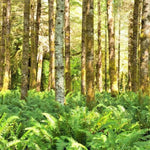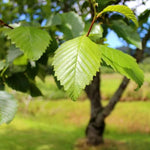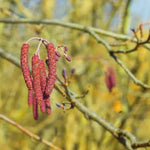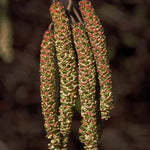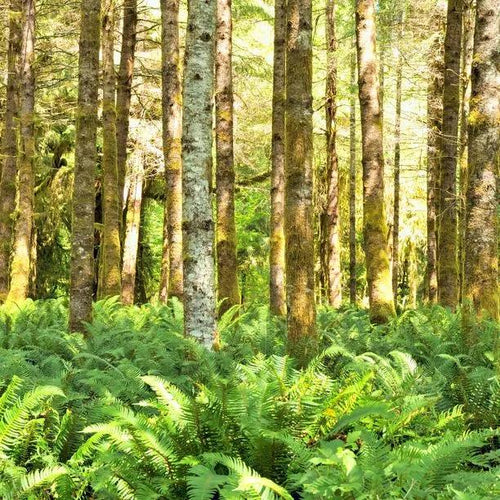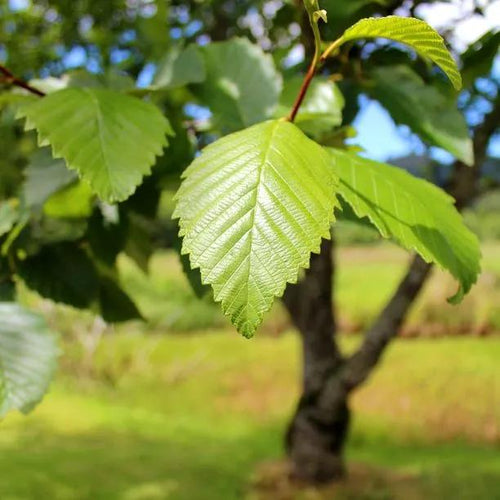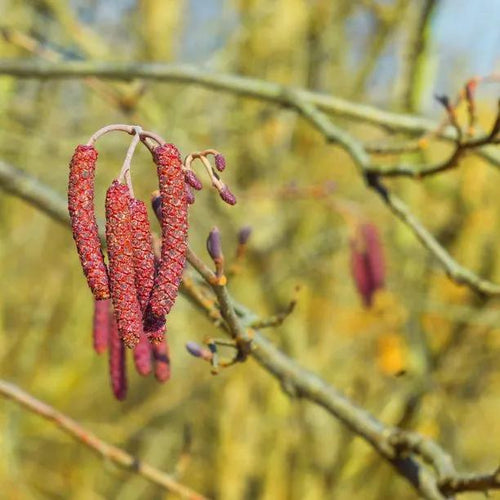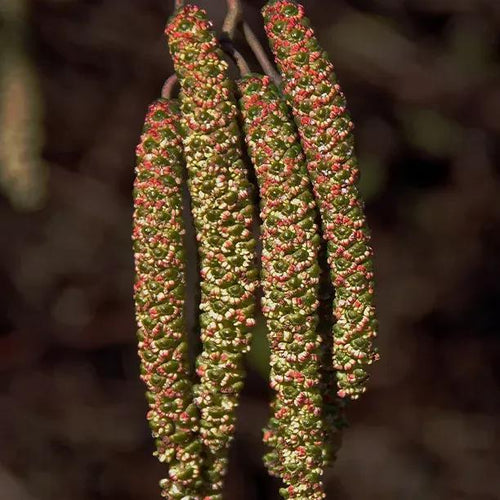Red Alder Trees
Red Alder trees, Alnus rubra, is a slender, elegant tree with a neat, cone-shaped canopy. Unlike other Alders, it doesn't tend to produce suckers. It's quite decorative in spring, when the bare branches are festooned with long red catkins. It gets its name from these catkins and from its wood, which flushes red when a fresh piece is split and exposed to the air. The green leaves are crinkled and serrated, turning mid-yellow in autumn.
The tallest Red Alder on record was 32 metres tall, but 20 metres is typical.
We also grow younger Red Alder saplings.
Browse our alder trees, or our full range of garden trees.
Delivery season: Alders are delivered bareroot during late autumn and winter, approximately November-March inclusive.
Choosing a size: Small trees are cheaper, easier to handle and more forgiving of less than ideal aftercare, so they're best for a big planting project. If instant impact is your priority, or if you are only buying a few plants for use in a place where it's convenient to water them well in their first year, then you may as well use bigger ones. All our bareroot trees are measured by their height in centimetres above the ground (the roots aren't measured).
Features
- Height: 20m
- Soil: Any, ideal for poor & wet sites. Needs full sun.
- Grows on the coast
- Use: Screening, reclaiming, erosion prevention
- Adds nitrogen to soil. Big catkins.
- Colour: Yellow Autumn leaves
- Bareroot delivery only: November-March
Growing Red Alder
They'll grow vigorously in very wet soil, but they do need full sun. They prefer lighter, sandier soils to heavy clay, but only chalk is a problem. They'll also grow on the coast.
They're very tough trees, but urban pollution tends to cause cosmetic damage to their leaves.
Note: Alders have invasive roots that can break old water pipes and damage the foundations of old buildings or walls. 15 metres away from vulnerable structures is a safe distance. New build, concrete foundations aren't at risk.
History & Trivia
Red Alder is native to the West coast of America, where it is also known as Oregon or Californian Alder, and is the traditional wood for smoking salmon. It was introduced to Britain in the late 1800's. The wood is good for making string instruments, especially electric guitars and basses.
Like the rest of the Alder family, it has symbiotic bacteria living in nodules on its roots that improve the soil by releasing water-soluble nitrogen based compounds. Alders are especially useful for quickly binding loose, rocky soil.
Standard trees are measured by their girth in centimetres 1 metre above ground level: their trunk's waist measurement. Unlike sapling trees and hedge plants, standards aren't measured by their height, which will vary quite a bit both between and within species.
So, a 6/8cm standard tree has a trunk with a circumference of 6-8cm and an 8/10 standard has a trunk 8-10cm around. This measurement makes no difference to the tree's final height.
On average, standard trees are 2-3.5 metres tall when they arrive, but we cannot tell you precisely how tall your trees will be before we deliver them.








 Secure, One-Tap Checkout
Secure, One-Tap Checkout
 Hand Picked, Delivered to Your Door!
Hand Picked, Delivered to Your Door! 1 Year Bareroot Guarantee
1 Year Bareroot Guarantee